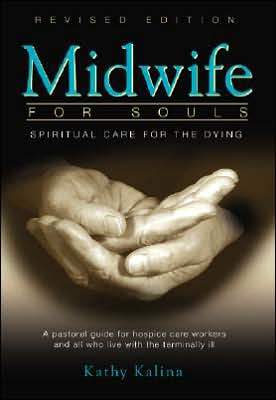Managing Death in the ICU: The Transition from Cure to Comfort
This volume reviews the state of the art in caring for patients dying in the ICU, focusing on both clinical aspects of managing pain and other symptoms, as well as ethical and societal issues that affect the standards of care received. The book also addresses the changing epidemiology of death in this setting related to managed care, practical skills needed to provide the highest quality of care to terminal patients, communicating with patients and families, the mechanics of withdrawing...
Search in google:
This volume reviews the state of the art in caring for patients dying in the ICU, focusing on both clinical aspects of managing pain and other symptoms, as well as ethical and societal issues that affect the standards of care received. The book also addresses the changing epidemiology of death in this setting related to managed care, practical skills needed to provide the highest quality of care to terminal patients, communicating with patients and families, the mechanics of withdrawing life-supporting therapies, and the essential role of palliative care specialists in the ICU. The book briefly describes unique issues that arise when caring for patients with some of the more common diseases that precipitate death in the ICU. Contributors for the book were chosen because they have experience caring for patients in the ICU and are also conducting current research to find ways of improving care for terminal patients in this setting. Doody Review Services Reviewer:David J. Dries, MD(University of Minnesota Medical School)Description:This multiauthored book describes the management of critical illness which becomes terminal illness in the intensive care unit.Purpose:Articulated is a template for treating patients who do not recover from critical illness or injury. Relief of psychosocial suffering in patients and family is emphasized. Finally, practical and specific advice is given on the means to fulfill the goals of palliative care in the ICU.Audience:The critical care fellow, attending, or teacher is an appropriate audience for this work. Authors and editors represent leading critical care programs in North America.Features:The 28 chapters are divided into five groups. Initial chapters describe the context in which decisions to limit life support in the intensive care unit are made. Later sections help the clinician deal with feelings about death, societal input into limiting care in the intensive care unit, including the effects of race, recent legal decisions, and economic pressures. Final chapters describe end-of-life considerations for critical care practitioners dealing with patients having specific diseases, including AIDS, endstage malignancy, congestive heart failure, or chronic obstructive pulmonary disease. Chapters are clearly written with texture of type dividing major subheadings. Tables and other illustrations, as one might expect, are infrequent in a work of this kind. References allow access not only to the popular press but also legal decisions and pertinent medical literature. Medical references represent original work and date to within two years of publication.Assessment:Due to the severity and complexity of illness in the ICU, death is common and families rate communication with healthcare providers as one of the most important skills for these individuals. This book provides background and tools which allow the intensivist to come to grips with the mortality of patients in the ICU setting.
ContributorsPt. IThe Changing Landscape of Death in the ICU1Introducing the Concept of Managing Death in the ICU32The Changing Ethics of Death in the ICU73The Changing Nature of Death in the ICU194Making a Personal Relationship with Death31Pt. IIThe Decision to Limit Life Support in the ICU5Outcome Prediction in the ICU396Transdisciplinary Research to Understand the Role of Bias and Heuristics597The Role of Quality of Life and Health Status in Making Decisions about Withdrawing Life-Sustaining Treatments in the ICU698Advance Care Planning in the Outpatient and ICU Setting75Pt. IIIPractical Skills Needed to Manage Death in the ICU9How to Discuss Dying and Death in the ICU8510Pain and Symptom Control in the Dying ICU Patient10311Principles and Practice of Withdrawing Life-Sustaining Treatment in the ICU12712The Role of Critical Care Nurses in Providing and Managing End-of-Life Care14913Helping Families Prepare for and Cope with a Death in the ICU16514Helping the Clinician Cope with Death in the ICU18315The Interface of Technology and Spirituality in the ICU19316The Role of the Physician in Sacred End-of-Life Rituals in the ICU207Pt. IVSocietal Issues17The Roles of Ethnicity, Race, Religion, and Socioeconomic Status in End-of-Life Care in the ICU21518Legal Liability Anxieties in the ICU23119Economics of Managing Death in the ICU24520Organizational Change and Improving the Quality of Palliative Care in the ICU25721An International Perspective on Death in the ICU273Pt. VSpecific Diseases and Special Populations22AIDS29123Cancer30124Congestive Heart Failure31125Chronic Obstructive Pulmonary Disease31926Decisions to Limit Intensive Care in Patients with Coma32927Special Concerns for Infants and Children33728Special Concerns for the Very Old349Index369
\ Reviewer: David J. Dries, MD(University of Minnesota Medical School)\ Description: This multiauthored book describes the management of critical illness which becomes terminal illness in the intensive care unit.\ Purpose: Articulated is a template for treating patients who do not recover from critical illness or injury. Relief of psychosocial suffering in patients and family is emphasized. Finally, practical and specific advice is given on the means to fulfill the goals of palliative care in the ICU.\ Audience: The critical care fellow, attending, or teacher is an appropriate audience for this work. Authors and editors represent leading critical care programs in North America.\ Features: The 28 chapters are divided into five groups. Initial chapters describe the context in which decisions to limit life support in the intensive care unit are made. Later sections help the clinician deal with feelings about death, societal input into limiting care in the intensive care unit, including the effects of race, recent legal decisions, and economic pressures. Final chapters describe end-of-life considerations for critical care practitioners dealing with patients having specific diseases, including AIDS, endstage malignancy, congestive heart failure, or chronic obstructive pulmonary disease. Chapters are clearly written with texture of type dividing major subheadings. Tables and other illustrations, as one might expect, are infrequent in a work of this kind. References allow access not only to the popular press but also legal decisions and pertinent medical literature. Medical references represent original work and date to within two years of publication.\ Assessment: Due to the severity and complexity of illness in the ICU, death is common and families rate communication with healthcare providers as one of the most important skills for these individuals. This book provides background and tools which allow the intensivist to come to grips with the mortality of patients in the ICU setting.\ \ \ 3 Stars from Doody\ \








